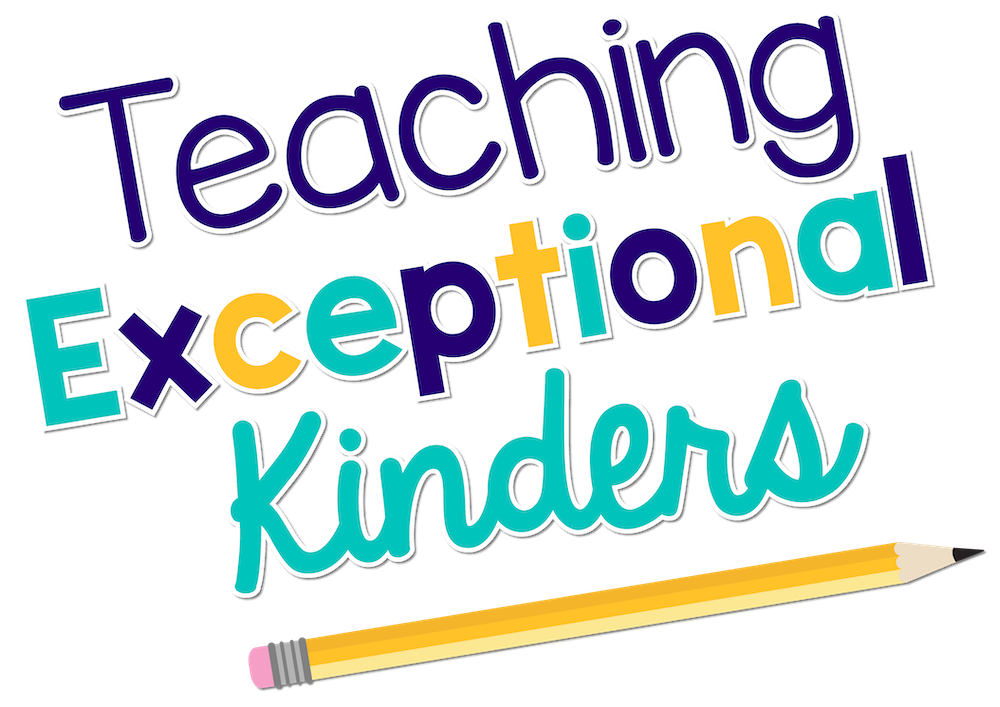What to Do If Your Behavior Chart Doesn’t Work
When it comes to the discussion about using behavior charts in the classroom, there are people who say they work and those who say they don’t. However, I don’t think the debate is really that straightforward. In this post, I’m going to share some reasons why a behavior chart doesn’t work and what you can do differently to use this tool effectively in your classroom.
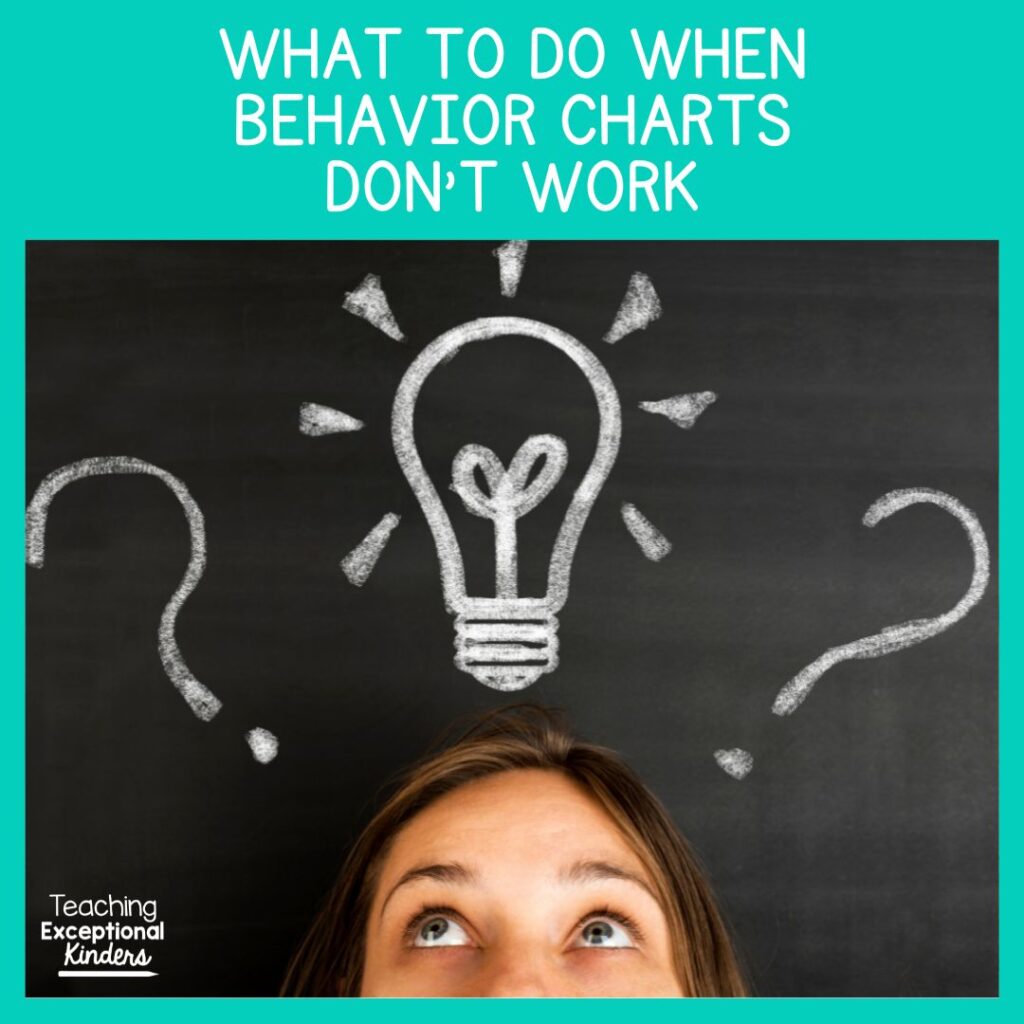
Why a Behavior Chart Doesn’t Work
Behavior charts can be a hot topic and there are many people who argue that they aren’t effective. I agree that there are specific instances when behavior charts don’t work. Here are just a few reasons why you might find that your behavior chart isn’t an effective tool for your students:
- It’s Not Being Used Consistently: Intermittent behavior charts that are referenced here and there will not work. When used consistently, behavior charts can actually work quite well for classroom management.
- It’s Not Focusing on Positive Behavior Changes: Behavior charts that focus on tracking misbehavior are not going to support your classroom management.
- It’s the Wrong Behavior Chart: I have shared before that there are certain behavior management systems that simply aren’t effective. Before you decide to give up behavior charts for good, consider whether you’ve just chosen the wrong format.
What to Do When Your Behavior Chart Doesn’t Work
Do you feel like you’ve chosen a strong behavior management system, used it consistently to reinforce positive behavior, and still feel like it’s not working? Here are five things you can do if your behavior chart isn’t working for your students.
1. Check for Simplicity
The first step is to make sure that you’ve chosen a simple behavior chart. The chart should serve as a streamlined visual of what the students are working toward and what positive behavior is expected of them. Your students don’t need a huge list of convoluted rules or a set of arbitrary milestones on the way to a final reward. Simple is best!
2. Choose a Realistic Goal
The next step is to make sure that you’ve chosen a realistic behavior goal for students to work toward with the behavior chart. A behavior chart works best when it focuses on just one specific and measurable behavior. When you do this, your students will know exactly what’s expected of them.
However, that one goal actually needs to be attainable! Should you have a goal of “Level 0 Voices All Day” in a kindergarten classroom? No, that wouldn’t be realistic! There will be several times during the day when students should be expected to use other voice levels to participate in learning activities. Instead, you might have the goal to use Level 0 voices in the hallway. This would be a more realistic goal that you can reinforce every time your class transitions through the school building.
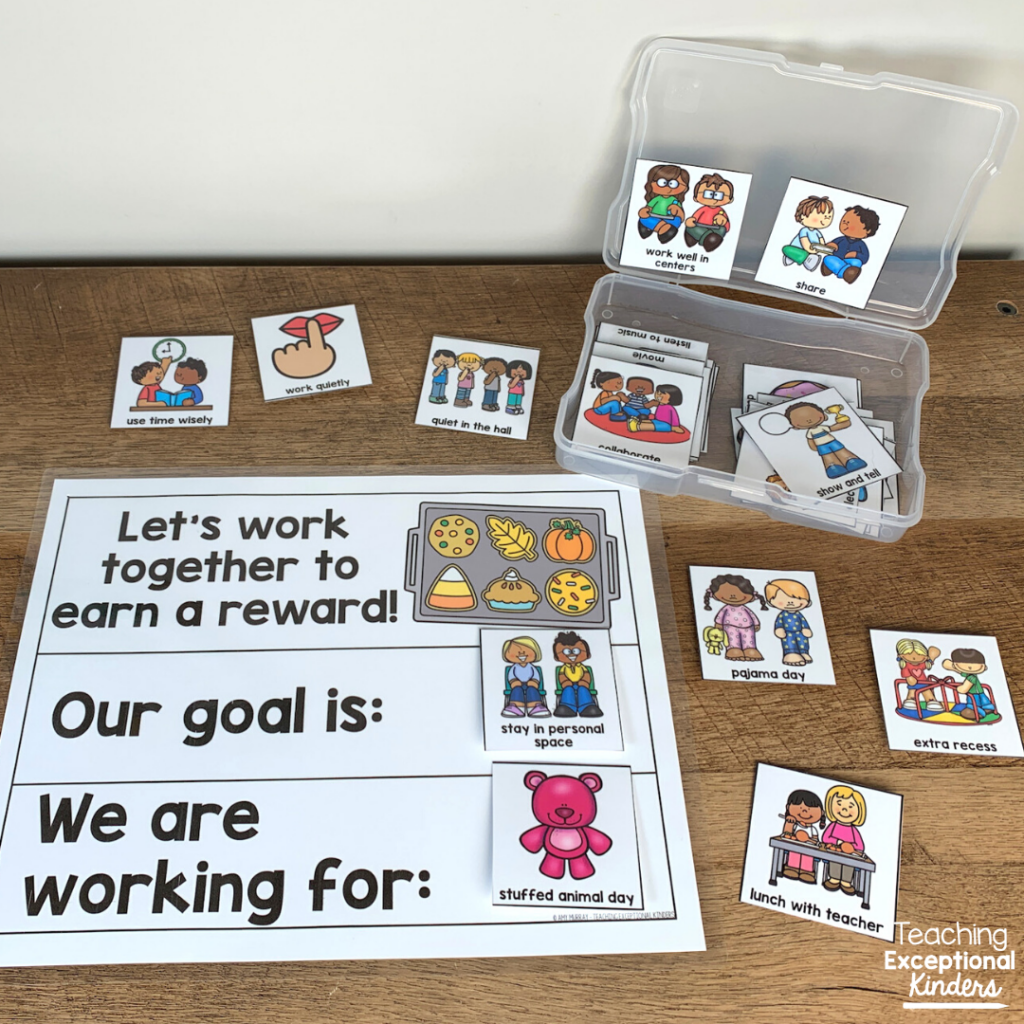
3. Ensure Student Buy-In
It’s also important to make sure that you have student buy-in for your behavior chart. It won’t do any good to track behavior if the students are working toward something that isn’t motivating for them. This is why effective behavior charts have some sort of reward system included.
Rewards don’t have to be expensive or complicated to be effective! However, it is important that your students have some buy-in to work toward the behavior goal. Once you have decided on a reward, be sure to communicate the reward to your students so they know what to expect. Then, be sure that the reward can be easily given to your students as soon as possible after they’ve earned it. When students have to regularly wait for a week after earning their reward, it is much less effective.
4. Be Consistent
Consistency is one of the biggest hurdles to effective behavior charts. When the only time students in your classroom receive attention is when they’ve misbehaved, they will continue to exhibit this behavior. By consciously and consistently focusing on recognizing positive behavior choices, you’ll find that your behavior chart will be much more effective.
Another roadblock for consistency is to expect perfection before rewarding students. For example, if you have a whole-class behavior chart, you don’t need to wait for the entire class to exhibit the target behavior. Look for individual students who are doing a great job and then have them add to the behavior chart.
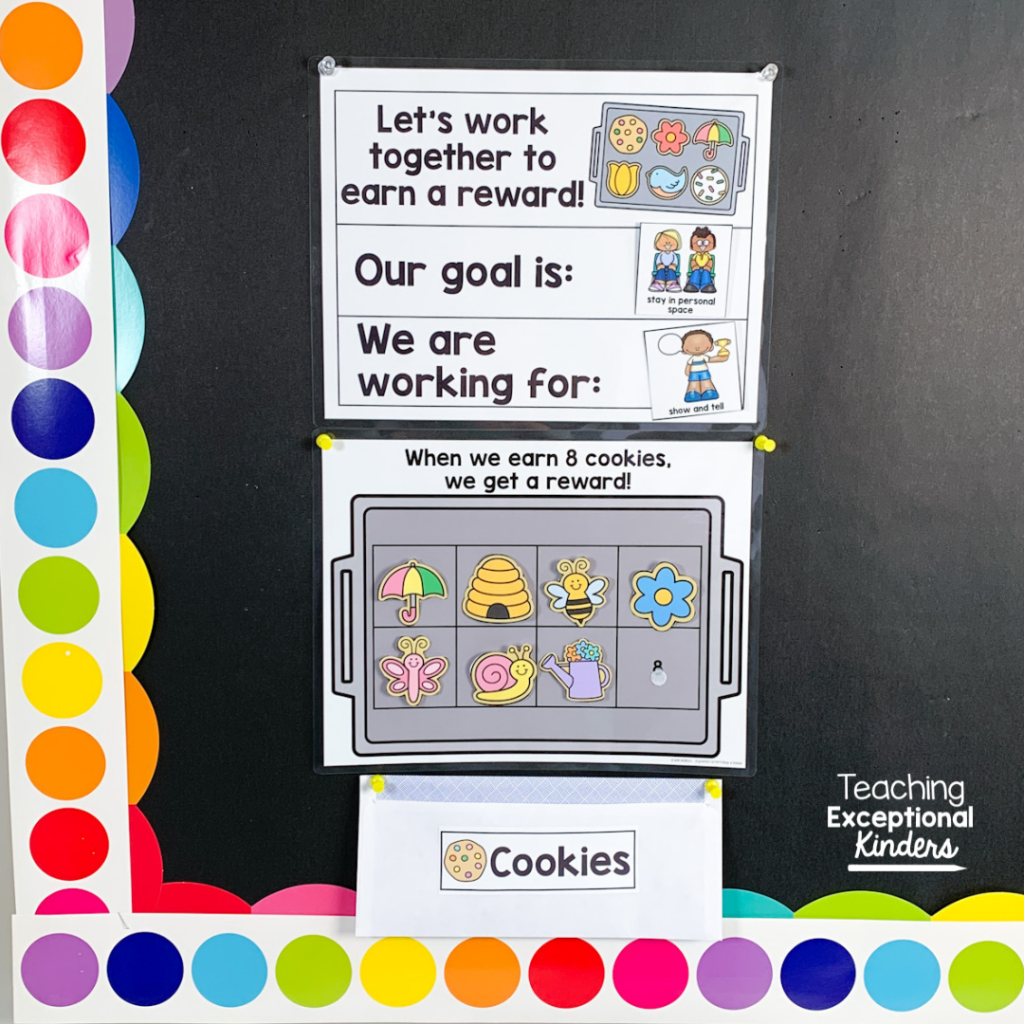
5. Anticipate Adjustments
Finally, it’s important to have some flexibility built into your behavior system. Be ready to adjust behavior goals or rewards based on the current needs and interests of your students.
As an example, for this cookie behavior chart, you can adjust the required number of cookies up or down depending on how difficult the goal is going to be for your classroom. If you have chosen a challenging goal, you might decide to have a lower number of cookies required to earn the reward. This will help your students stay motivated to work on the goal!
Printable Behavior Charts for Kindergarten
Would you like to give behavior charts another chance in your classroom? I have put together a bundle of seasonal behavior charts that are simple, realistic, and engaging for students. You’ll find that this resource is a great addition to your classroom management because it sets up your students for success.
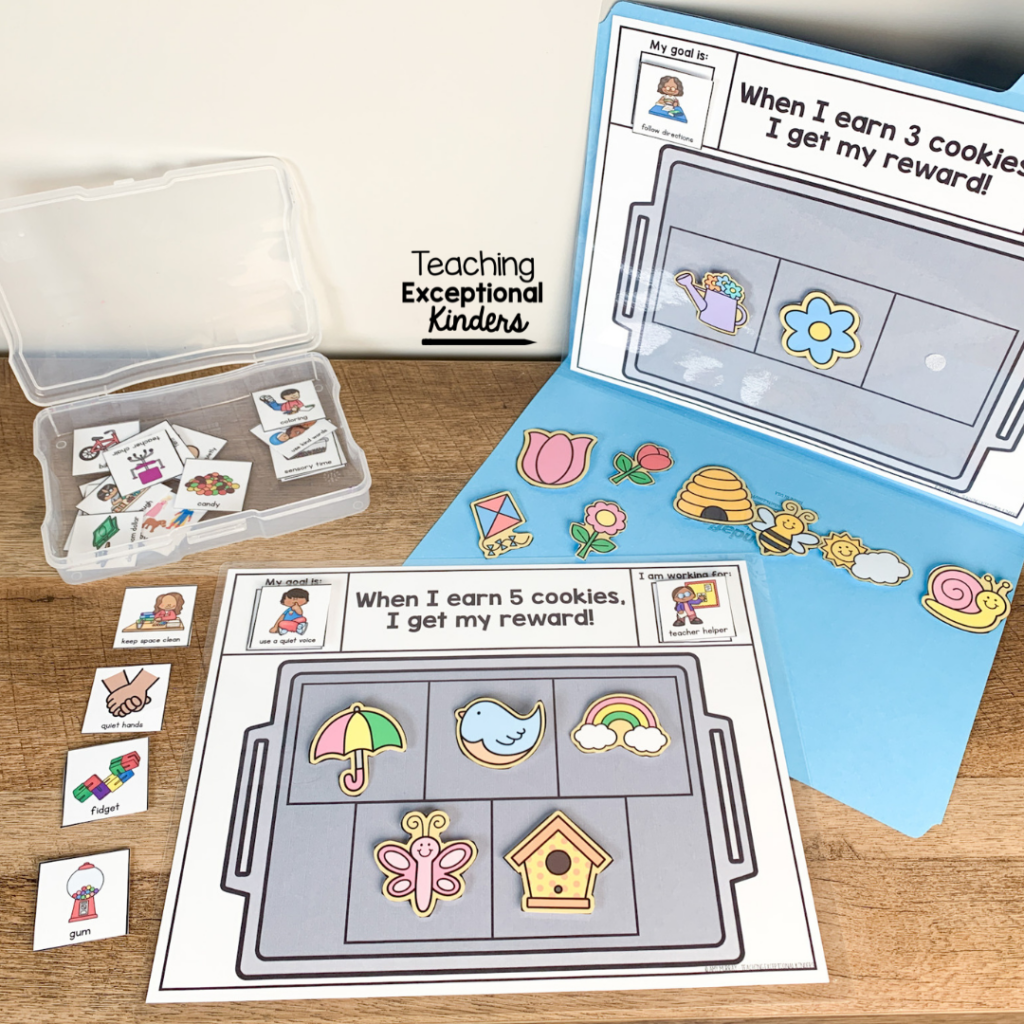
Students will add seasonal cookies to the cookie sheet as they demonstrate the expected behavior. Once the cookie sheet is full, students earn the reward. This resource comes with both whole-class and individual behavior chart options, so you can use it in the way that makes the most sense in your classroom.
To take a closer look at everything else included in this bundle, you can find it on TPT.
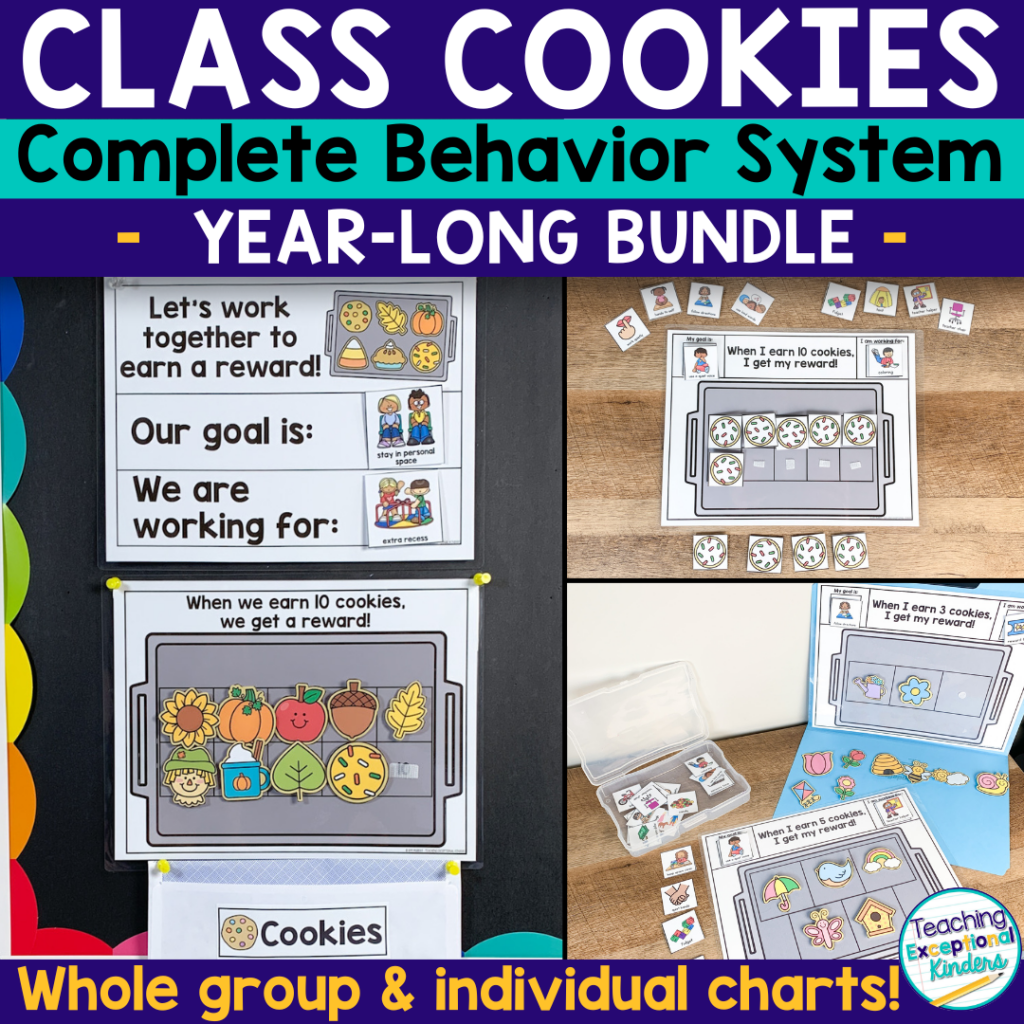
Save These Tips for Kindergarten Behavior Charts
Be sure to save this post if you’d like to come back to it later! Just add the pin below to your favorite teaching board on Pinterest. You’ll be able to quickly find these tips and resources the next time you’re frustrated with your behavior management system!
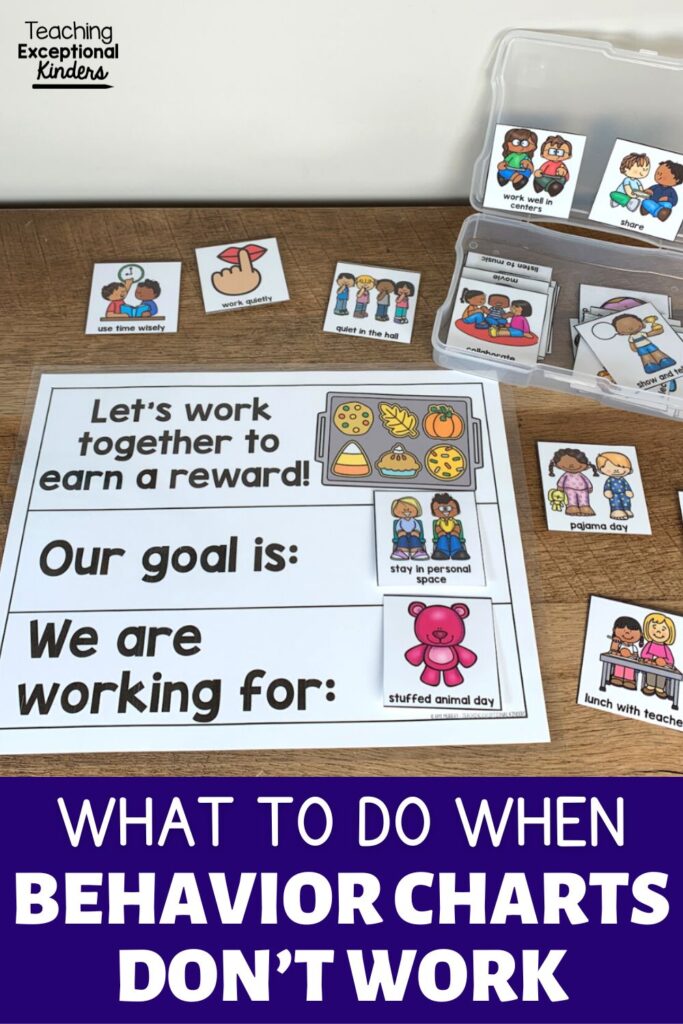
Amy
SITE DESIGN BY LAINE SUTHERLAND DESIGNS

